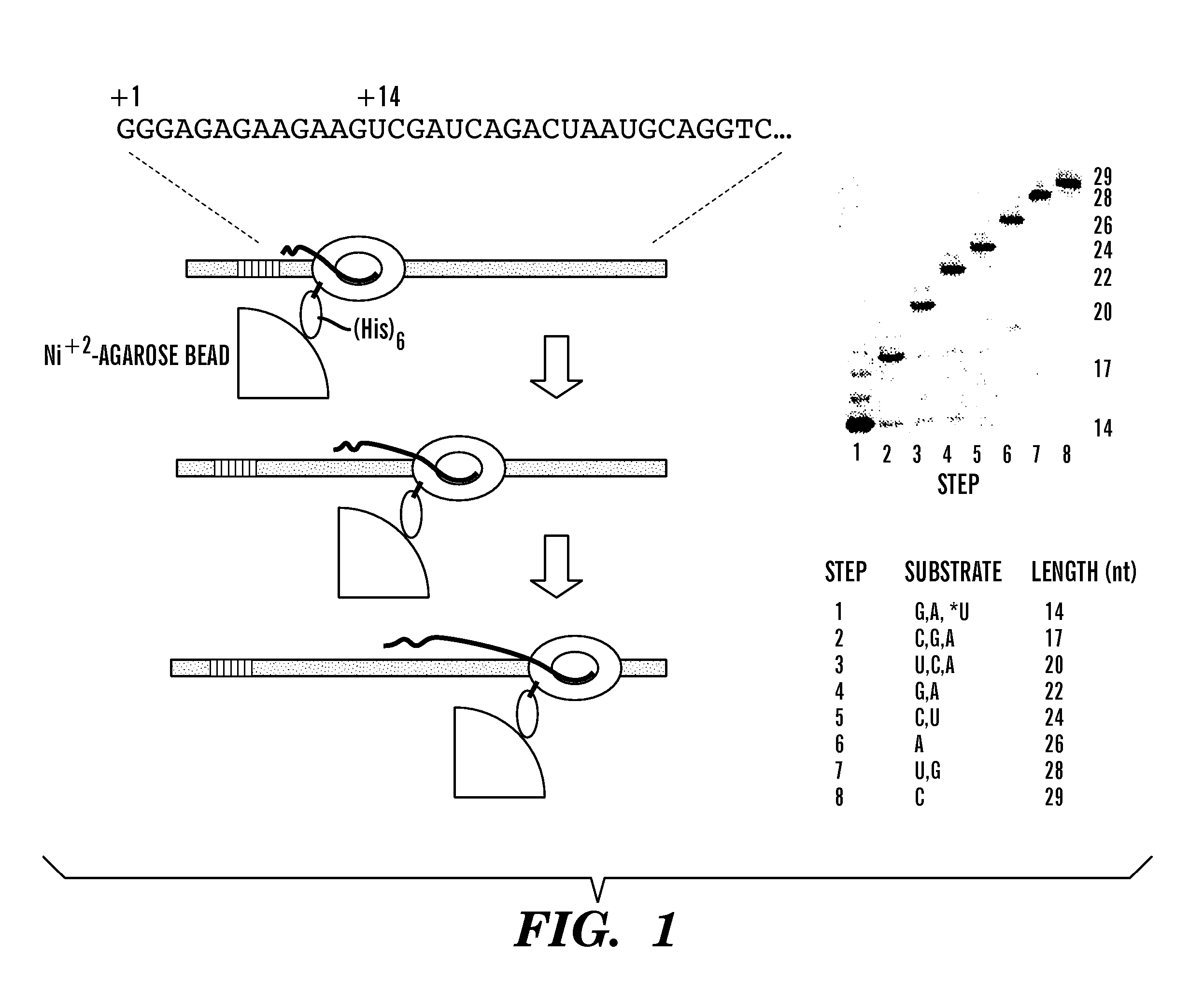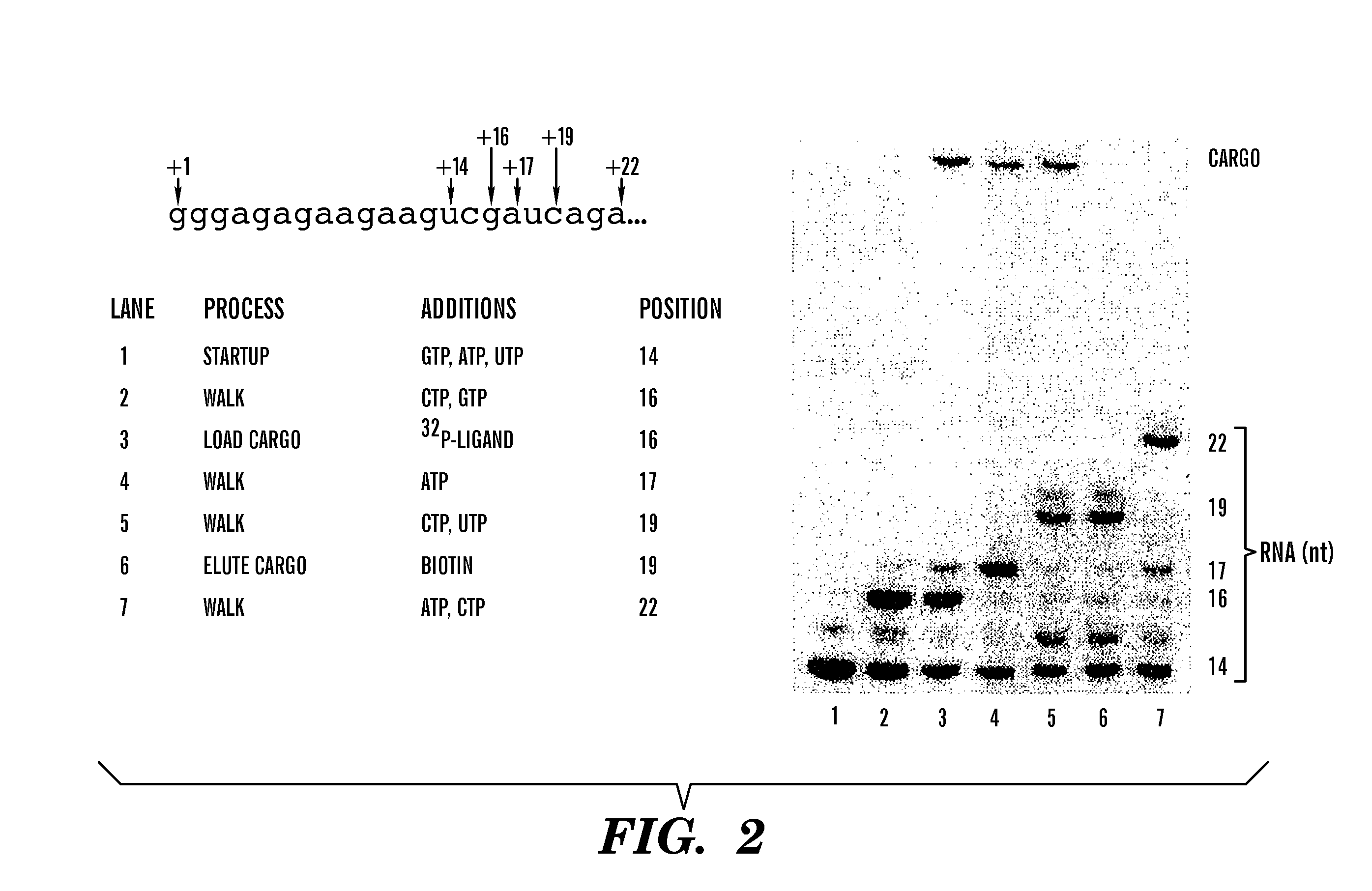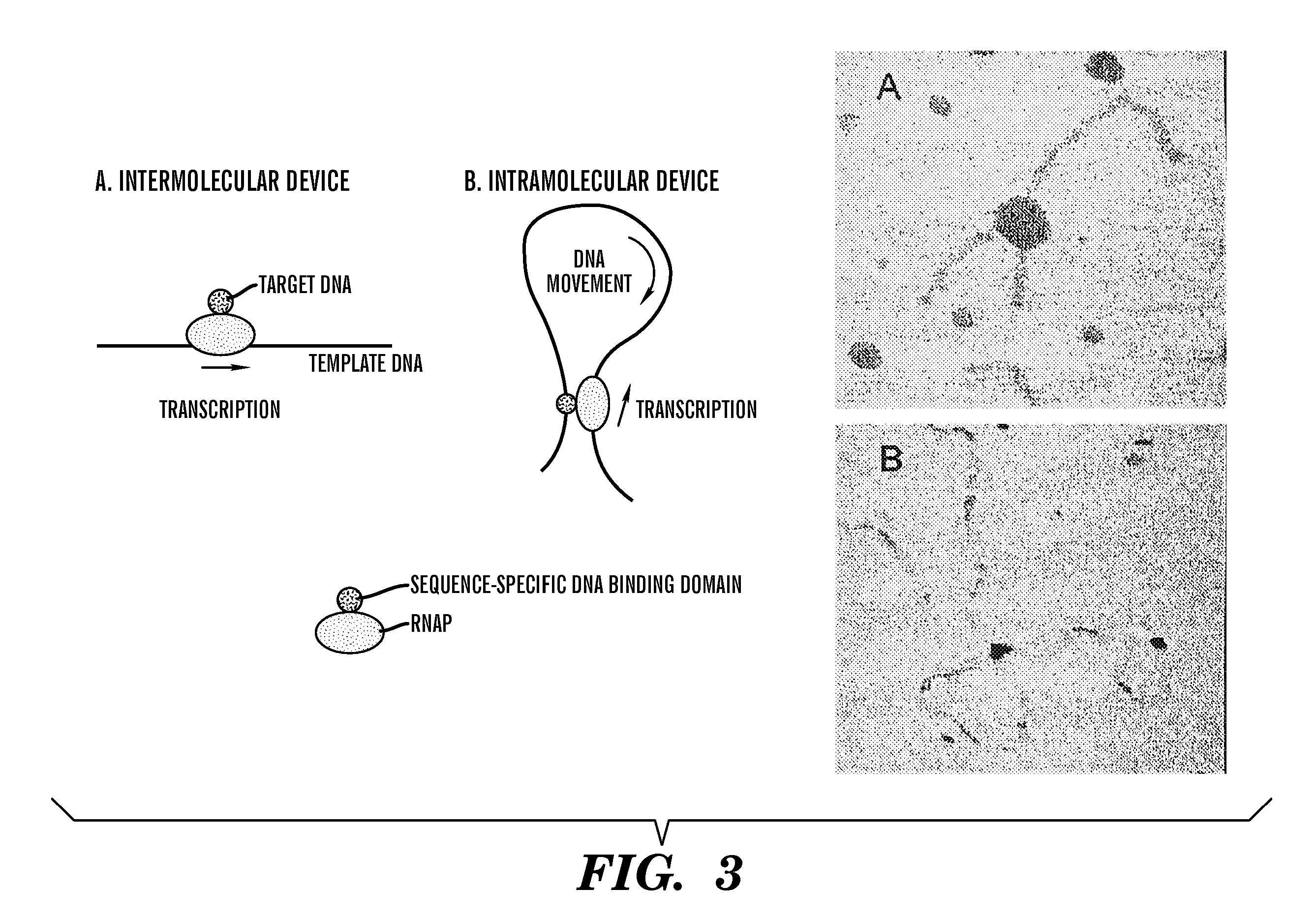Use of RNA polymerase as an information-dependent molecular motor
a molecular motor and information-dependent technology, applied in the field of information-dependent molecular motors, can solve the problems of inability to precisely control rnap, difficulty or unwieldiness in purifying a homogeneous rnap population from bacterial cell culture, and achieve the effect of convenient manipulation
- Summary
- Abstract
- Description
- Claims
- Application Information
AI Technical Summary
Benefits of technology
Problems solved by technology
Method used
Image
Examples
example 1
Immobilization and Controlled Movement of T7 RNAP
[0038] For many applications in which RNAP can be used as a molecular motor, it is necessary to attach the enzyme to a solid surface. One way in which this may be accomplished is to modify the enzyme to include a hexahistidine, His6, tag. The tag allows the enzyme to bind tightly to Ni++ agarose beads or columns, without affecting enzyme performance. See for example, Van Dyke, et al., Gene 111: 99-104 (1992). The methodology for modifying T7, T3 and SP6 phage RNAP to fuse histidine residues to the amino terminus, the oligonucleotides and other materials used in the modification, and the plasmid vectors containing the His-tagged RNAP (plasmids pBH116, pBH117, pBH161, pDL19, pDL21, pBH118, pBH176 and pDL18) are disclosed in detail in He, et al., Protein Expression and Purification 9: 142-151 (1997), specifically incorporated by reference here. The number of histidine residues added to the amino terminus is not critical, between 6 and ...
example 2
Capture and Movement of Bound Ligand
[0042] In order to harness RNAP to do work, it is necessary to attach the enzyme to other structures or ligands. To demonstrate the ability of RNAP to bind another object during transcription, we modified His6-tagged T7 RNAP to include an additional 38 amino acid peptide (SBP-tag) that has a high affinity for streptavidin (KD=2.5 nM). The methods and materials employed in this modification are disclosed in Keefe, et al., Protein Expr. Purif 23: 440-46 (2001). The SBP-tag is compatible with a wide variety of streptavidin-conjugated fluorescent and enzymatic reporter systems and its binding to ligand is readily reversible by the addition of biotin. In this experiment, we used a biotin-conjugated 32P-labeled DNA fragment as the reporter ligand.
[0043] First, start up complexes of SBP-tagged RNAP were formed by incubation with a template that directs synthesis of an RNA with the sequence indicated in FIG. 2 in the presence of G, A and U, and the com...
example 3
Construction of Simple DNA Devices
[0045] To illustrate the ability of a RNAP motor to rearrange a DNA structure, we constructed two simple DNA nanodevices. In the first device, we fused an auxiliary sequence-specific DNA binding domain, the GAL4 binding domain, to T7 RNAP to allow the fusion protein to simultaneously bind to two different DNA regions—the portion of the template DNA being transcribed and the target DNA. Movement of the RNAP along the template changed the disposition of the target DNA relative to the template.
[0046] The formation and organization of this type of complex was visualized by atomic force microscopy (AFM) and can be seen in Panel A of FIG. 3. A 1009 bp template DNA containing a T7 promoter 195 bp from one end and a 244 bp target DNA containing a GAL4 binding site near the terminus were prepared by PCR amplification of appropriate plasmids using standard techniques known in the art. The two DNA fragments were incubated with GAL4:T7 RNAP in the presence o...
PUM
| Property | Measurement | Unit |
|---|---|---|
| linear forces | aaaaa | aaaaa |
| rotary force | aaaaa | aaaaa |
| affinity | aaaaa | aaaaa |
Abstract
Description
Claims
Application Information
 Login to View More
Login to View More - R&D
- Intellectual Property
- Life Sciences
- Materials
- Tech Scout
- Unparalleled Data Quality
- Higher Quality Content
- 60% Fewer Hallucinations
Browse by: Latest US Patents, China's latest patents, Technical Efficacy Thesaurus, Application Domain, Technology Topic, Popular Technical Reports.
© 2025 PatSnap. All rights reserved.Legal|Privacy policy|Modern Slavery Act Transparency Statement|Sitemap|About US| Contact US: help@patsnap.com



